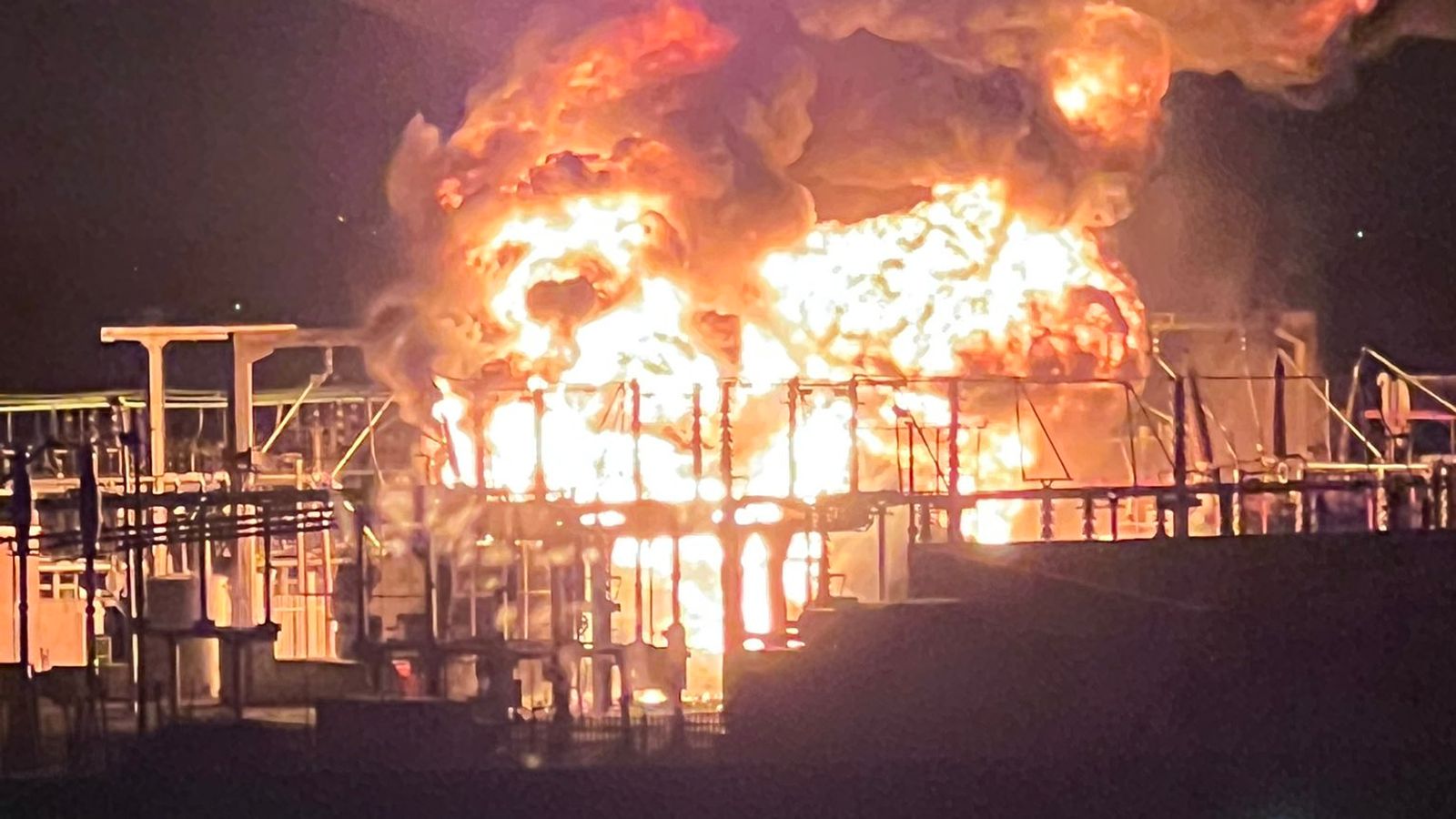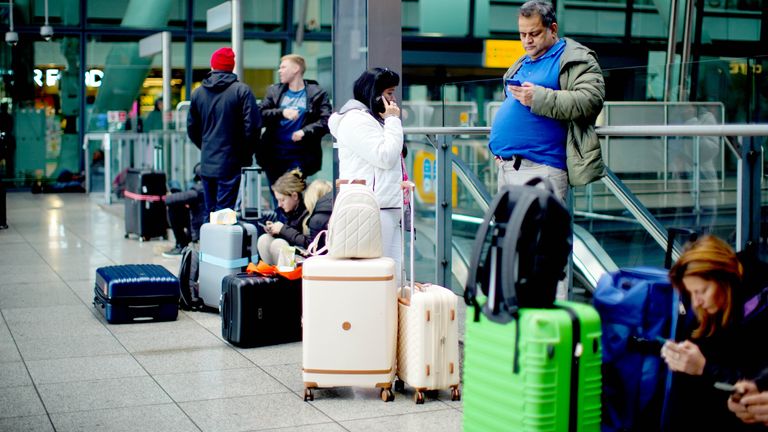‘Catastrophic failure’ led to Heathrow power outage – with chances missed to prevent it


A power outage that shut Heathrow Airport earlier this year, causing travel chaos for more than 270,000 passengers, was caused by a “catastrophic failure” of equipment in a nearby substation, according to a new report.
Experts say the fire at the North Hyde Substation, which supplies electricity to Heathrow, started following the failure of a high-voltage electrical insulator known as a bushing, before spreading.
The failure was “most likely” caused by moisture entering the equipment, according to the report.
National Grid, which owns the substation, missed two opportunities to prevent the failure, experts found, the first in 2018 when a higher-than-expected level of moisture was found in oil samples.
Such a reading meant “an imminent fault and that the bushing should be replaced”, according to guidance by the National Grid Electricity Transmission.
However, the report by National Energy System Operator (NESO) said the appropriate responses to such a serious issue were “not actioned”, including in 2022 when basic maintenance was postponed.
“The issue therefore went unaddressed,” the report added.
Please use Chrome browser for a more accessible video player

0:21
Moment Heathrow substation ignites
The design and configuration of the airport’s internal power network meant the loss of just one of its three supply points would “result in the loss of power to operationally critical systems, leading to a suspension of operations for a significant period”, the report added.
Heathrow – which is Europe’s biggest airport – closed for around 16 hours on 21 March following the fire, before reopening at about 6pm.
Around 1,300 flights were cancelled and more than 270,000 air passenger journeys were disrupted.

Tens of millions of pounds were lost, thousands of passengers were stranded, and questions were raised about the resilience of the UK’s infrastructure.
More than 71,000 domestic and commercial customers lost power as a result of the fire and the resulting power outage, the report said.
NESO chief executive, Fintan Slye, said there “wasn’t the control within their [National Grid’s] asset management systems that identified that this [elevated moisture levels] got missed.
“They identified a fault, [but] for some reason the transformer didn’t immediately get pulled out of service and get repaired.

“There was no control within the system that looked back and said ‘oh, hang on a second, you forgot to do this thing over here’.”
Sky’s science and technology editor, Tom Clarke, pointed to the age of the substation’s equipment, saying “some of these things are getting really very old now, coming to the end of their natural lives, and this is an illustration of what can happen if they are not really well maintained”.
The report also highlights a lack of joined-up thinking, he said, as “grid operators don’t know who’s critical national infrastructure on the network, and they don’t have priority”.
Please use Chrome browser for a more accessible video player

0:49
Heathrow bosses were ‘warned about substation’
Responding to the report’s findings, a Heathrow spokesperson said: “A combination of outdated regulation, inadequate safety mechanisms, and National Grid’s failure to maintain its infrastructure led to this catastrophic power outage.
“We expect National Grid to be carefully considering what steps they can take to ensure this isn’t repeated.
“Our own Review, led by former Cabinet Minister Ruth Kelly, identified key areas for improvement and work is already underway to implement all 28 recommendations.”
In May, Ms Kelly’s investigation revealed that the airport’s chief executive couldn’t be contacted as the crisis unfolded because his phone was on silent.

Energy Secretary Ed Miliband, who commissioned the NESO report, called it “deeply concerning”, because “known risks were not addressed by the National Grid Electricity Transmission”.
Mr Miliband said energy regulator Ofgem, which opened an investigation on Wednesday after the report was published, is investigating “possible licence breaches relating to the development and maintenance of its electricity system at North Hyde.
“There are wider lessons to be learned from this incident. My department, working across government, will urgently consider the findings and recommendations set out by NESO and publish a response to the report in due course.”
National Grid said in a statement it has “a comprehensive asset inspection and maintenance programme in place” and said it has “taken further action since the fire”.
This includes “an end-to-end review” of its oil sampling process and results, further enhancement of fire risk assessments at all operational sites, and “re-testing the resilience of substations that serve strategic infrastructure”.
Read more on Sky News:
Starmer ‘faced down his MPs and lost’
Partial verdict in Diddy trial
Concern for player safety at Euros
A spokesperson said: “We fully support the recommendations in the report and are committed to working with NESO and others to implement them. We will also cooperate closely with Ofgem’s investigation.
“There are important lessons to be learnt about cross sector resilience and the need for increased coordination, and we look forward to working with government, regulators and industry partners to take these recommendations forward.”
The Metropolitan Police previously confirmed on 25 March that officers had “found no evidence to suggest that the incident was suspicious in nature”.

Science and technology editor
The reliability of our grid is, it turns out, paper thin.
A fire at the National Grid substation at North Hyde, which supplies Heathrow Airport, was caused by the “catastrophic failure” of a bushing in a high-voltage transformer at the site.
A bushing is made of paper and foil, soaked in oil.
The resulting fire, which knocked out the substation and in turn, power to more than 70,000 customers, including the west London airport, led to 1,300 flight cancellations affecting nearly 300,000 travellers.